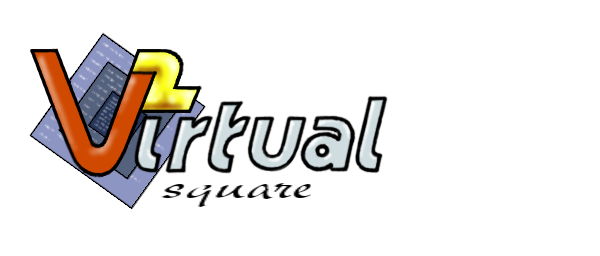Tue Apr 24 16:43:52 CEST 2007

Applications of Virtual Square
Virtual Square and Mobility/Migration.
Host computers and networks are only computational and communication resources for virtual square.
It is natural in an environment like that to cope with mobility: changing a path in the real network system (e.g. changing real IP address, provider, connection technology, etc) is like to change a cable between two switches in the virtual square network. The packets get rereouted on the new path in the real network but no changes in connectivity or address take place in the virtual square world. Open connections are unaffected, just the performance is related to the changes in the underlying "virtual once" layer.
Virtual Square and Security/Privacy.
Security is not just a matter of protecting data on storage and on communication channels. We are spreading information about ourself in the world as Hansel left pebbles along the way.
As for network security communication channels can be encripted and the idea of virtual machine itself has been used in many ways to create a cage for protectind data (e.g. the sand box concept of the Java Virtual Machine). Using Virtual Square we can be protected by localization (a traceroute in the virtual square world is completely unrelated to geographical or network topology consideration). We can also protect our pattern of traffic by changing dynamically the address and the peer to used to enter the virtual square network. It is possible to have different machines or just personalities on a system communicating using different channels and providing different data. Sensible data is sent through safe, encripted, not locatable channels while anonymous interactions can be transmitted in clear using local interfaces. Nothing is impossible for security threats, but it is very very harder for a cracker to access sensible data if he/she has not only to break the access to a machine but also the (virtual) machine itself as sensible data are stored elsewhere.
Management of Hardware/Software Upgrades and Heterogeneity
The choice of an hardware/software infratructure can be an inertia factor for evolution. The common example is the amount of investments in software that can prevent the move towards a modern and effective operating system. Using virtual square techniques it is possible to run the old software in the new environment by defining a virtual machine able to appear as the old one both in terms of hardware architecure and operating system. This solution helps in making a gracefully migration between different architecture. A similar although less general approach was used twice by Apple Computer, first when they decided to move from CISC m68000 architecture to RISC PPC and later to cope with the migration from MacOS 9 to the UNIX architecture of MacOS X. In both cases the old architecture was kept within a virutal machine for backward compatibility, hardware architecture in the formar case, operating system architecture in the latter. Virtual Square proposed architecture generalizes this approach to a wider range of hardware and operating system architectures.

VirtualSquare is a KEAP Project
© 2004 Renzo Davoli. The Virtual Square logo is © 2004 by Sandro Pifferi (Thanks).
Permission is granted to copy, distribute and/or modify this document under the terms of the GNU Free Documentation License, Version 1.2 or any later version published by the Free Software Foundation; with no Invariant Sections, no Front-Cover Texts, and no Back-Cover Texts. This is a copy of the license
 Wiki
Wiki